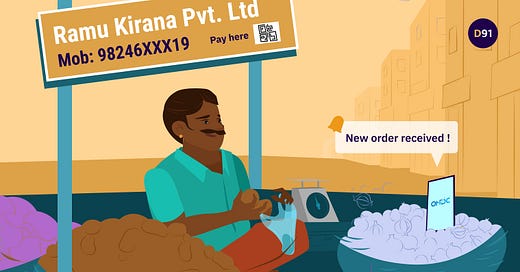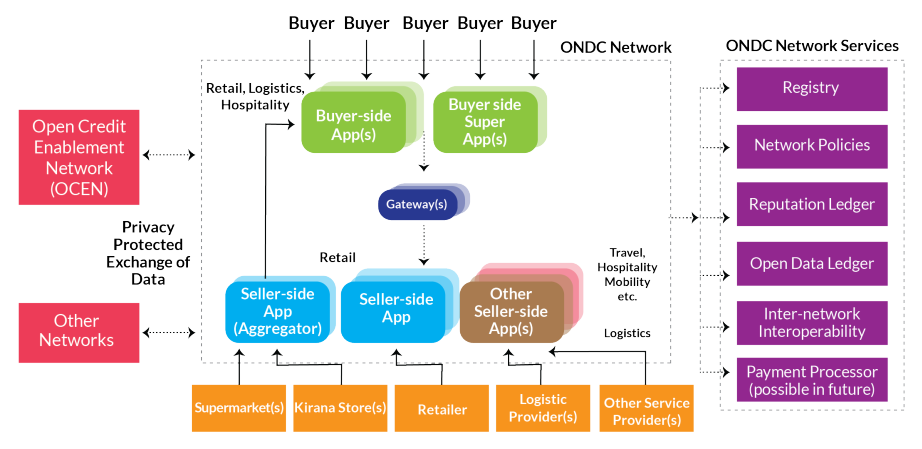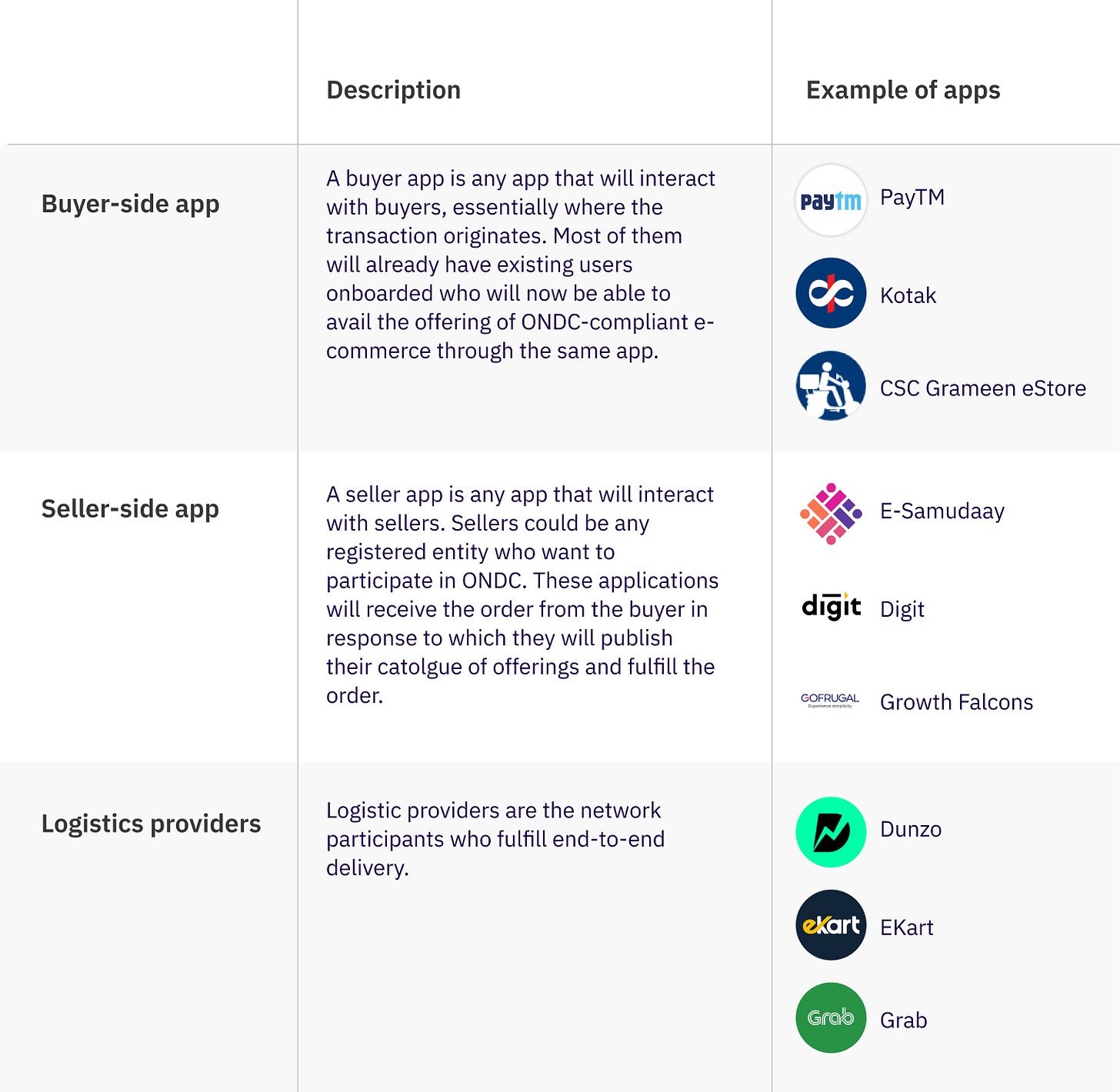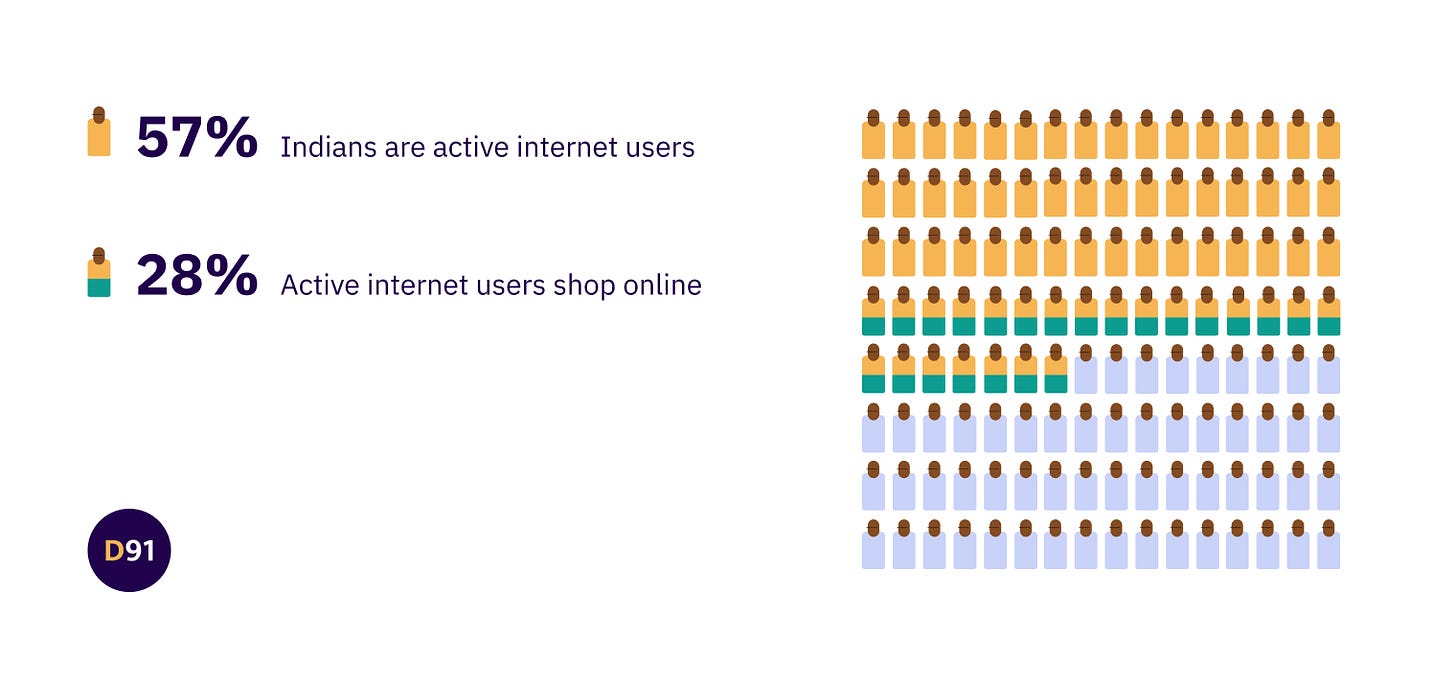Why do we need ONDC for e-commerce?
By now, some of you might be aware of “ONDC” and its intended purpose. If not, then you are at the right place. For beginners, ONDC stands for Open Network for Digital Commerce. Think of it like a network that will bring a wide range of buyers and sellers into one digital space. But this kind of sounds like Amazon or Flipkart, right? Well, not really, and here’s why.
ONDC is not a platform. It is a decentralized, interoperable network. Okay, too many big words. Basically, it is a network that has multiple buyers and sellers who can interact with each other and offer a wider range of options, probably more than Amazon and Flipkart or their likes. On the price front, although ONDC will not prescribe any specific fees to be charged by network participants, competition will ensure that commissions are significantly lower than current e-commerce monopolies.
The promise of ONDC lies in its ability to make e-commerce more inclusive by onboarding many more sellers and making them accessible to consumers. A point to remember is that today only 8% of Indians use e-commerce.
Ok, so how does ONDC exactly work?
As I was saying, ONDC is a network of buyers and sellers. The buyers (like you and me) are the existing users of tech platforms and payment apps. For example, if you are a user of PhonePe, PayTM, or CSC Grameen store, you are automatically a user of a buyer app.
In the case of sellers (merchants), they are onboarded onto seller apps by companies that are either in the business of digitization commercial activities (eg. eSamudaay) or have the technical know-how of end-to-end order fulfillment. The goal of a seller app is to onboard retailers, consumer packaged goods (CPG) brands, and direct-to-consumer (D2C) brands to be a part of ONDC1.
As per reports, ONDC currently charges sellers a referral commission of 3% to find buyers. This is 7 to 10 times lesser than the existing online seller commission rates of 23% - 28%2. In addition, the merchants don’t have to spend on customer acquisition costs or marketing as the buyer apps will have regular customers who already use these apps.
With the decentralization and unbundling of the e-commerce industry, innovation in the sector will be energized. Other than the seller- and buyer-apps & logistics providers, newer business models that offer seller services such as catalog management, order management, invoicing & reconciliation, warehousing, and inventory management will emerge.
Let’s explain with an example
Imagine you have guests coming over and need to make some arrangements before they arrive. Let’s say you want to get your house professionally cleaned, need to stock up on groceries, and also require extra bedding for a stayover. At present, you will probably purchase all the items and services on Amazon - Instamart - Urban Company. Imagine if you could do all of this through your usual payment app and avail yourself of more choices that are probably cheaper. This is the buyer’s argument for adopting ONDC. What about the seller?
From a seller’s perspective, ONDC is a network that would help digitally non-native retailers, manufacturers, and traders to enjoy the advantage of an online presence. These commercial units can log in to online platforms irrespective of their location, size, and product offerings and have access to a larger customer base, more sales, more revenue, and access to more logistic partners. ONDC also promises that the cost of participating in their network will be significantly cheaper for a seller as compared to selling on Amazon and Flipkart.
To put things in perspective, only 28% of active internet users shop online3 (57% of Indians are active internet users). Till 2020, online sales accounted for only 3.6% of India’s total retail sales4. Coming to hyperlocal provision stores found at every corner of India, 1.2 crore Kirana stores continue to operate in an offline mode for all their process, barring payments5.
These data points are an indicator of the extent of unmet demand and the potential of e-commerce to grow. ONDC’s focus will on small merchants and rural consumers, with apps in Indian languages. This network is also likely to curb predatory pricing for high-value and high-margin products.
Are there going to be challenges for small-sized merchants?
Yes, there will be certain teething issues in onboarding merchants that need to be addressed. We need to keep in mind that the merchant and retailer base is not homogeneous. ONDC’s target sellers may not be frequent users of the internet or e-commerce. They wouldn’t know how to receive orders online and successfully fulfill the order lifecycle. Accepting returns, replacements, and refund requests might prove difficult for small sellers as they are new to this system of reconciliation. The hope is that best-in-class seller apps, agent-led onboarding process, hand-holding retailers at every step of the process, robust grievance redressal, coupled with witnessing better margins due to wider reach will make the process smooth and lead to a positive experience.
Do we need ONDC after so many years of Amazon and Flipkart?
“Anyone that has a monopoly will pretend that they’re in incredible competition”. - Peter Theil
When any platform becomes very big, the buyers and sellers face concentration risk which can become the single point of failure. With the concentration of power, comes deliberate exclusions, discretionary behavior, and predatory pricing. They cease to be a platform and end up becoming operators who monopolize the market. For smaller and medium sellers, this means that they lose the freedom to participate on their own terms. In some cases, a seller faces a steep cost if they want to migrate or simultaneously sell on multiple platforms, including their own. This includes maintaining separate infrastructure, spiking the cost, and limiting participation.
Solving these problems for a country with a massive population requires a new approach. In technical terms, what was required was a shift from an operator/platform-centric model to a platform-driven model to an interoperable decentralized network (big words again!)
What this means for small and medium enterprises is
Boost to participate in the ONDC network
Better discoverability6 and trust, irrespective of the platform(s)
Autonomy of buyers and sellers
The concept of open network commerce is not limited to the retail sector but can be applied to other digital commerce areas like mobility, food delivery, logistics, travel, and other products and services7.
Ok, so that’s the motivation behind setting up ONDC!
Are we planning to conduct research on the topic of ONDC?
Yes! Given the potential of ONDC and the opportunity it holds, we at D91 labs have our heads buzzing with research questions.
For beginners, we want to understand
How do non-digitally native small merchants perceive the ONDC model?
What challenges do seller apps face in merchant onboarding, inventory management, customer support, accounting management and invoicing, operations, and end-to-end delivery?
What has been the journey of merchants who are onboarded on the ONDC network?
Does participation in ONDC provide a gateway to suitable financial products for enterprises?
What design aspects should we consider while building seller and buyer interaction interfaces for the best user experience?
Join us in this journey of exploring ONDC as it becomes a reality in India. If you are someone who is working on or working with ONDC, we would love to speak with you. You can write to us at d91labs@gmail.com
https://ondc.org/NetworkParticipants.html
https://www.gofrugal.com/blog/what-is-ondc-the-e-commerce-revolution-of-2022/
https://images.assettype.com/afaqs/2021-06/b9a3220f-ae2f-43db-a0b4-36a372b243c4/KANTAR_ICUBE_2020_Report_C1.pdf
https://www.thehindubusinessline.com/info-tech/online-retail-in-india-forecast-to-grow-at-a-cagr-of-198-to-reach-855-billion-by-2025-report/article65245418.ece
https://www.asianage.com/technology/in-other-news/060919/how-these-companies-are-digitizing-kirana-stores-across-india.html
Discoverability refers to the quality of being easy to find via a search engine, within an application, or on a website.








